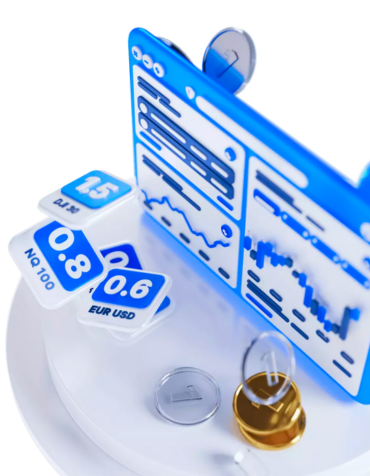We round up the best brokers that we believe offer best value for forex traders.





Trading the GBPLSL forex pair involves buying or selling it in the foreign exchange (forex) market. Here are the basic steps to trade GBPLSL:
To trade any forex pair, including GBPLSL, you'll need to open an account with a reputable forex broker. Ensure that the broker offers access to this specific GBPLSL pair.
Deposit funds into your forex trading account. The amount you deposit will determine the size of your trading positions.
Before making any trades, perform a thorough analysis of the GBPLSL pair. This analysis typically involves fundamental analysis (economic data, interest rates, geopolitical events) and technical analysis (price charts, indicators) to determine your trading strategy.
Most brokers offer trading platforms that allow you to execute trades. Familiarize yourself with the platform's interface and tools.
Choose whether you want to buy (long) or sell (short) the GBPLSL pair based on your analysis. Enter the trade order on your trading platform, specifying the amount (lot size) you wish to trade.
Executes the trade immediately at the current market price.
Sets a specific price at which you want your trade to be executed.
Sets a price at which your trade will be triggered if the market moves in a certain direction.
To manage risk, consider setting stop-loss orders to limit potential losses and take-profit orders to lock in profits at a certain price level.
Once your trade is executed, monitor the GBPLSL pair's price movement. Keep an eye on news and events that may impact the exchange rate.
When you achieve your trading objectives, either manually close the trade or wait for your predetermined take-profit or stop-loss levels to be reached.
After closing your trade, assess the outcome. Review your trading strategy and learn from both successful and unsuccessful trades to improve your skills.
Always practice proper risk management. Never risk more than you can afford to lose, and consider using leverage cautiously if available.
There are a few different strategies you can use when trading GBP/LSL. Let's go over them.
The first strategy is called the Breakout Strategy. Basically, you're looking for key support and resistance levels on the GBP/LSL chart. When the price breaks above a resistance level, it means there could be upward momentum. So, you might want to enter a long position with a stop loss below the breakout level and set your profit target at the next resistance level. On the other hand, if the price breaks below a support level, it suggests potential downward momentum. In that case, you might want to enter a short position with a stop loss above the breakout level and set your profit target at the next support level.
The second strategy is called Moving Average Crossover Strategy. This one uses two moving averages - let's say a 50-day moving average and a 200-day moving average - to identify trends in GBP/LSL price movements. When the shorter-term moving average crosses above the longer-term moving average, it signals an uptrend and an opportunity to go long on GBP/LSL with a stop loss placed below recent swing lows. Similarly, when the shorter-term moving average crosses below the longer-term moving average, it indicates a downtrend and an opportunity to go short on GBP/LSL with a stop loss placed above recent swing highs.
Lastly, we have Fibonacci Retracement Strategy. With this strategy, you'll be using Fibonacci retracement levels to find potential areas of support or resistance in GBP/LSL price movements after significant trends or swings. You can draw Fibonacci retracement levels from major swing highs to lows (or vice versa) and look for confluence between these levels and other technical indicators like trendlines or horizontal support/resistance zones. By entering trades near these retracement levels with appropriate stop losses based on recent market volatility, you can aim for profit targets at subsequent Fibonacci extension levels or key psychological levels like round numbers.
So those are three strategies you can try with GBP/LSL trading. Remember to always do your own research and consider your risk tolerance before making any trades. Happy trading!